There are probably a few things we will need to know about the relationship between Sony cameras and Minolta cameras, and it may not be what you would normally expect.
Put your virtual hands up if you own a Sony camera.
Quite a few of you I'm betting.
Now keep those hands up if you remember Minolta cameras. Hmmm, quite a lot less. The thing is, that at the beating heart of your amazing Sony Alpha is the DNA of a great camera company, long since past, Minolta.
Minolta was never a giant like Nikon and Canon, they would probably be regarded as a level down from the two behemoths yet, significant amounts of the technology, not only in your Sonys but also pretty much any other modern DSLR or mirrorless camera comes from the innovation of Minolta through the 70’s, 80’s and 90’s.
Today we are going to look at how a failing film company lives on in one of the world’s most successful photographic brands.
Minolta: The Film Days
PASM is an acronym many of us know. It stands for Program, Aperture Priority, Shutter Priority, and Manual. Despite its ubiquitousness on modern cameras, it has only been around for 40 years or so and it was Minolta that introduced it to the world.
The camera was the Minolta XD-7 (or XD-11 in the U.S.) and it was one of the best regarded and technologically advanced cameras of the time. Perhaps more than any other camera, it signaled, Minolta’s intent to innovate.
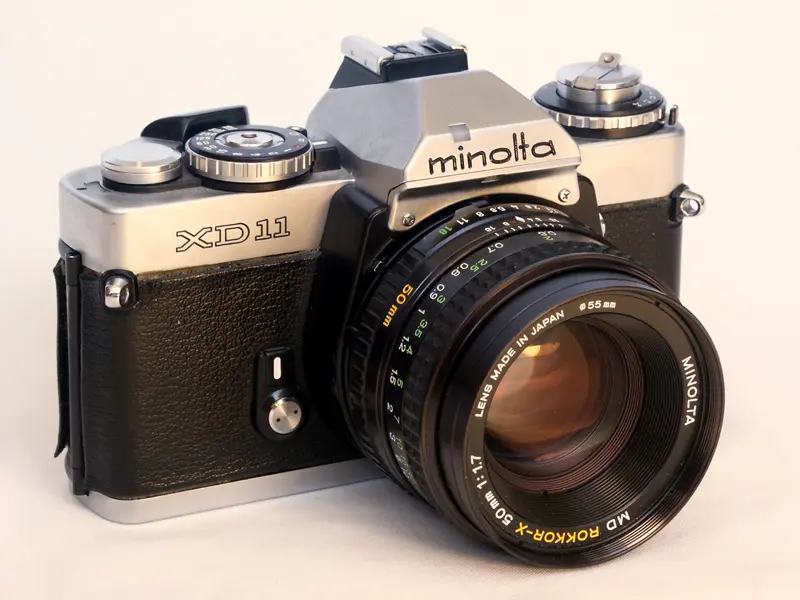
By Camerafiend
Another feature we take for granted today is autofocus and again it was Minolta that brought this to the photographic world. Although there had been autofocus before, these used specialized and expensive lenses with the autofocus function built into them. Here Minolta innovated and the Minolta 7000F integrated the autofocus into the camera body, leading to the lighter faster lenses we see today.
But that was not the only innovation of the 7000F. It also featured an integrated, motorized film advance into the camera body. Until then, cameras required an expensive and battery intensive attachment to power wind the film. The DNA of this Minolta innovation lives on in the continuous shooting modes that all digital cameras have today.
There is one other innovation that the 7000F introduced to the world, one that is still at the very heart of Sony cameras today, the A-mount system. It is the name that gave birth to the Sony Alpha system.
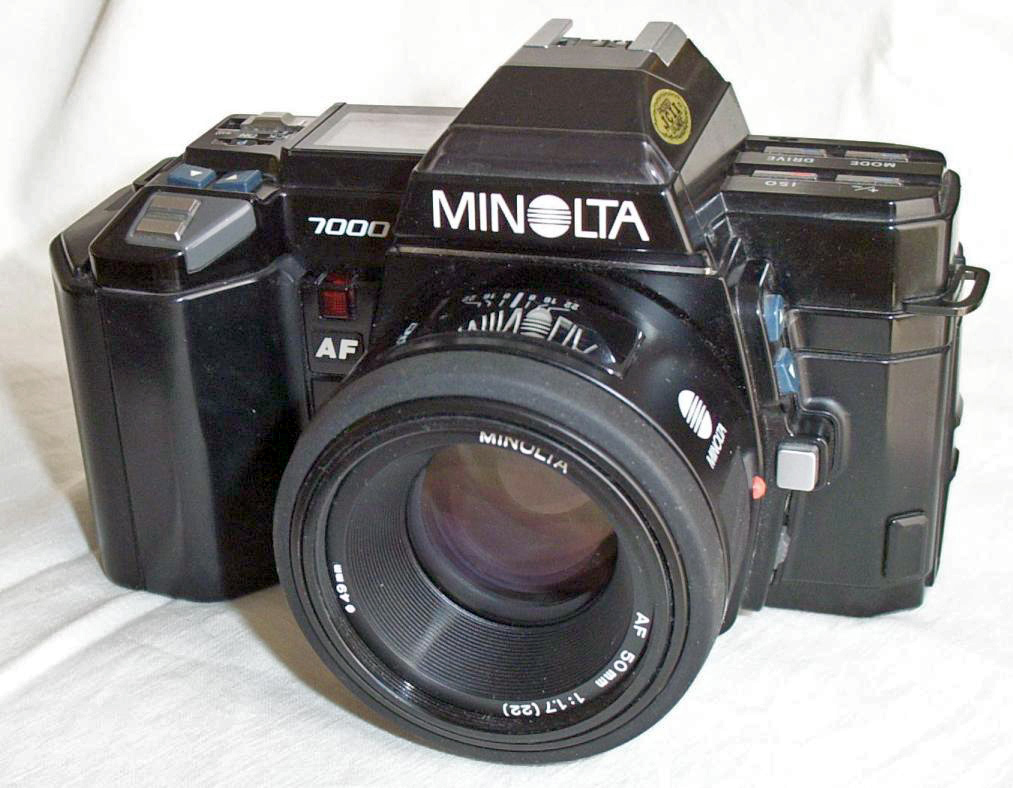
Minolta: Early Digital Days
Unlike some other big players in the photographic industry, Minolta was not caught unawares by the digital revolution. Indeed they launched their first digital camera way back in 1995, the 1.75mp Minolta RD-175. Not only was this a digital camera, but it was also a DLSR. It was not the first DSLR, that honor went to Kodak but it was the first DSLR that was hand portable and more importantly, affordable to the consumer market.

Even in the early days of digital, Minolta’s innovation could not be held back. Another feature commonly found on modern cameras is sensor based stabilization. This stems from Minolta’s Dimage A1, a 5mp bridge camera released in 2003.
Rather than use the more complex and expensive method of stabilizing elements within a lens, the A1 moved the camera sensor instead. Incidentally, the bridge camera is also a Minolta innovation, rising from the release of the DiMAGE 7.
Being one of the smaller camera companies, Minolta struggled financially, to keep up with the big players. In 2003, in an attempt to boost funds, they merged with the much larger film company, Konica, becoming Konica Minolta Ltd.
However, Minolta’s earlier failed attempts to capture a segment of the professional film camera market signaled its eventual downfall. Minolta’s digital cameras were mainly aimed at the consumer market at a time when the big digital players realized it would be the professional market that would drive initial demand.
The Arrival Of Sony.
By the early years of the millennium, Sony was a massive, global electronic brand manufacturing a diverse range of products from audio to televisions. Their relatively small digital camera business was, like Minolta, focussed on the consumer market.
They did, however, recognize the wealth of innovation and engineering talent that Konica Minolta still possessed and in 2006 created a new partnership with them. Six months later, Konica took the decision to leave the camera business altogether and sold it to Sony.
Sony had been looking to get into the DSLR market and Minolta was a perfect match and in particular Minolta’s technologically advanced Alpha mount.
Within a year, Sony had their first DLSR ready for the market, the Alpha A100. It was a 10.2mp camera, very much built around an older Minolta design and featuring many of Minolta’s innovations. These included in-camera stabilization and eye start autofocus.
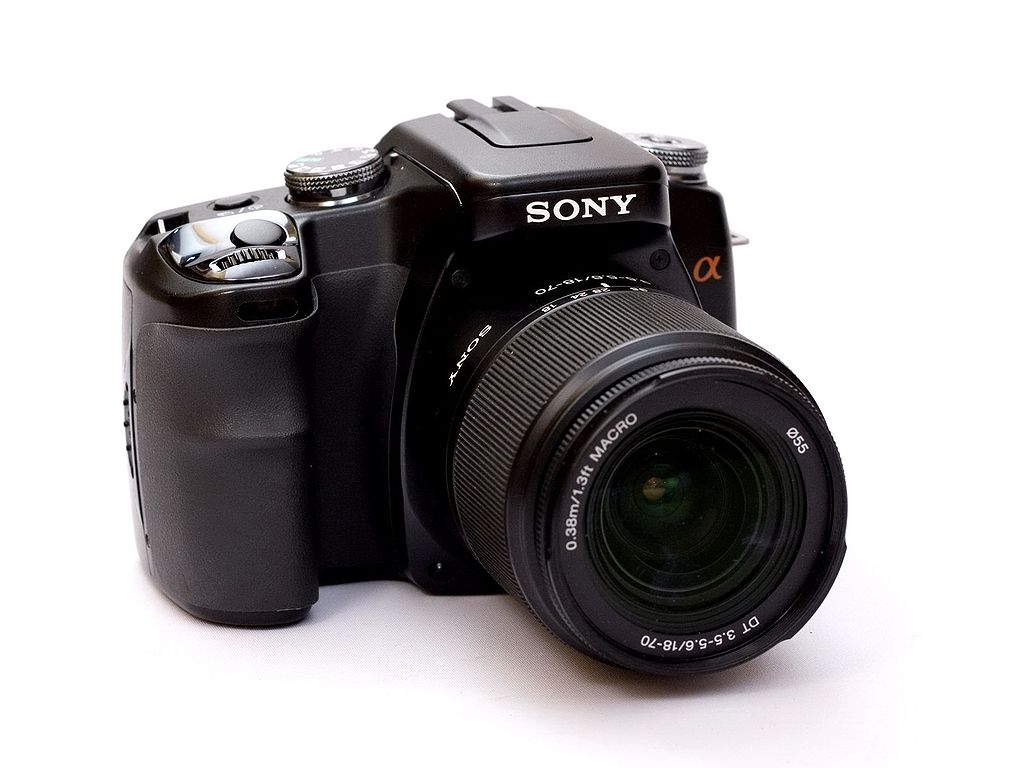
The A100 was the launch pad. Sony’s vast wealth allowed them to create an ambitious roadmap of camera releases. This culminated in 2008 with the announcement of a full frame DSLR with the largest pixel count yet seen, 24.6mp, the Alpha 900.
It signalled Sony’s intent to play with the big boys.
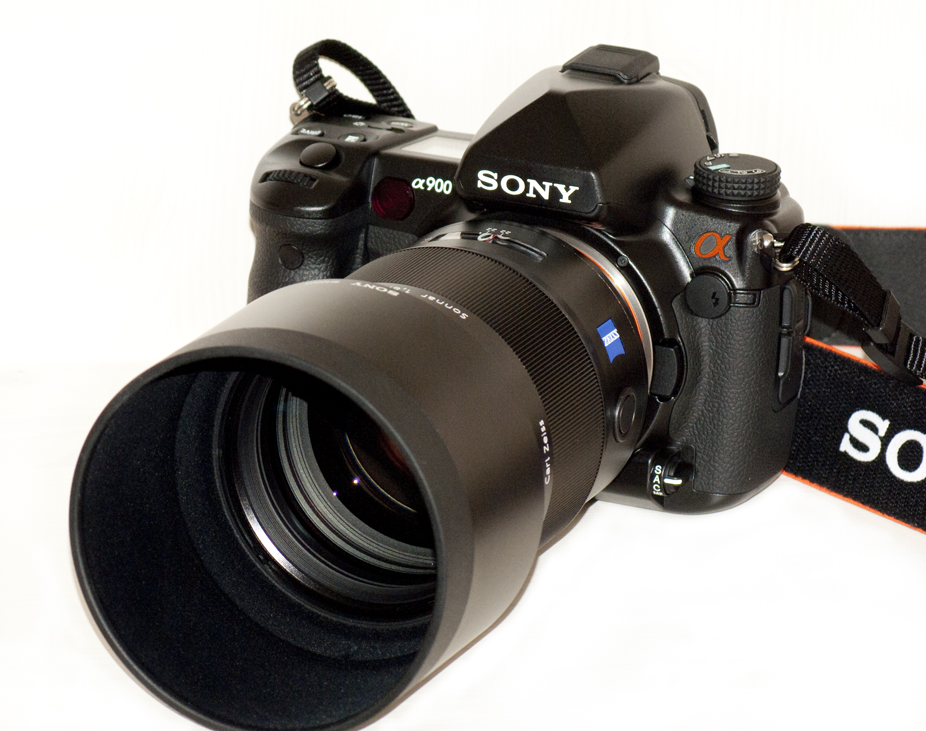
Using Minolta’s base technologies and their own innovations, Sony continued with their ambitious plans, releasing a wealth of well-received products both in the DSLR and compact markets.
Realizing the potential of the emerging mirrorless market, Sony went all out on producing the world’s first full frame mirrorless camera, the Alpha 7. By now the fabled Minolta Alpha mount had been superseded by Sony’s own E-mount but, if you dig deep, you'll find a significant amount of the DNA of the Alpha 7 comes from the innovation of Minolta.
Perhaps the moral of this story is that not all photographic companies that fail, end up in the dustbin of history. While there might not be very much left of companies like Kodak or Bronica, the innovation of Minolta lives on deep inside one of the most successful photographic brands of the modern era.
As someone who was a rare Minolta professional user in the 1990’s that brings a warm glow to my heart.
As always, give us your thoughts in the comments below.



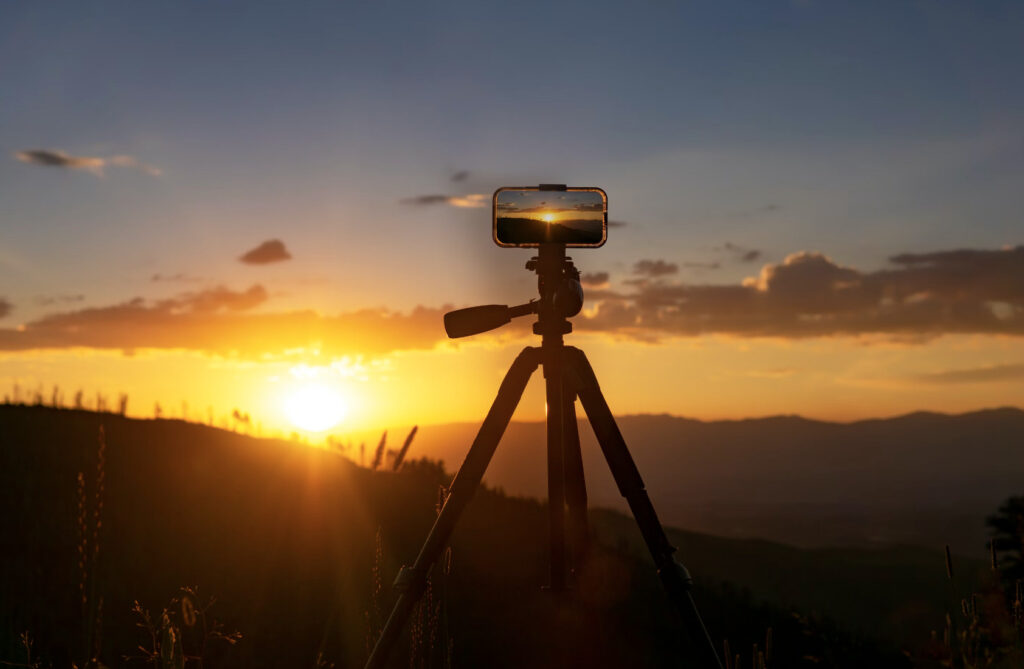

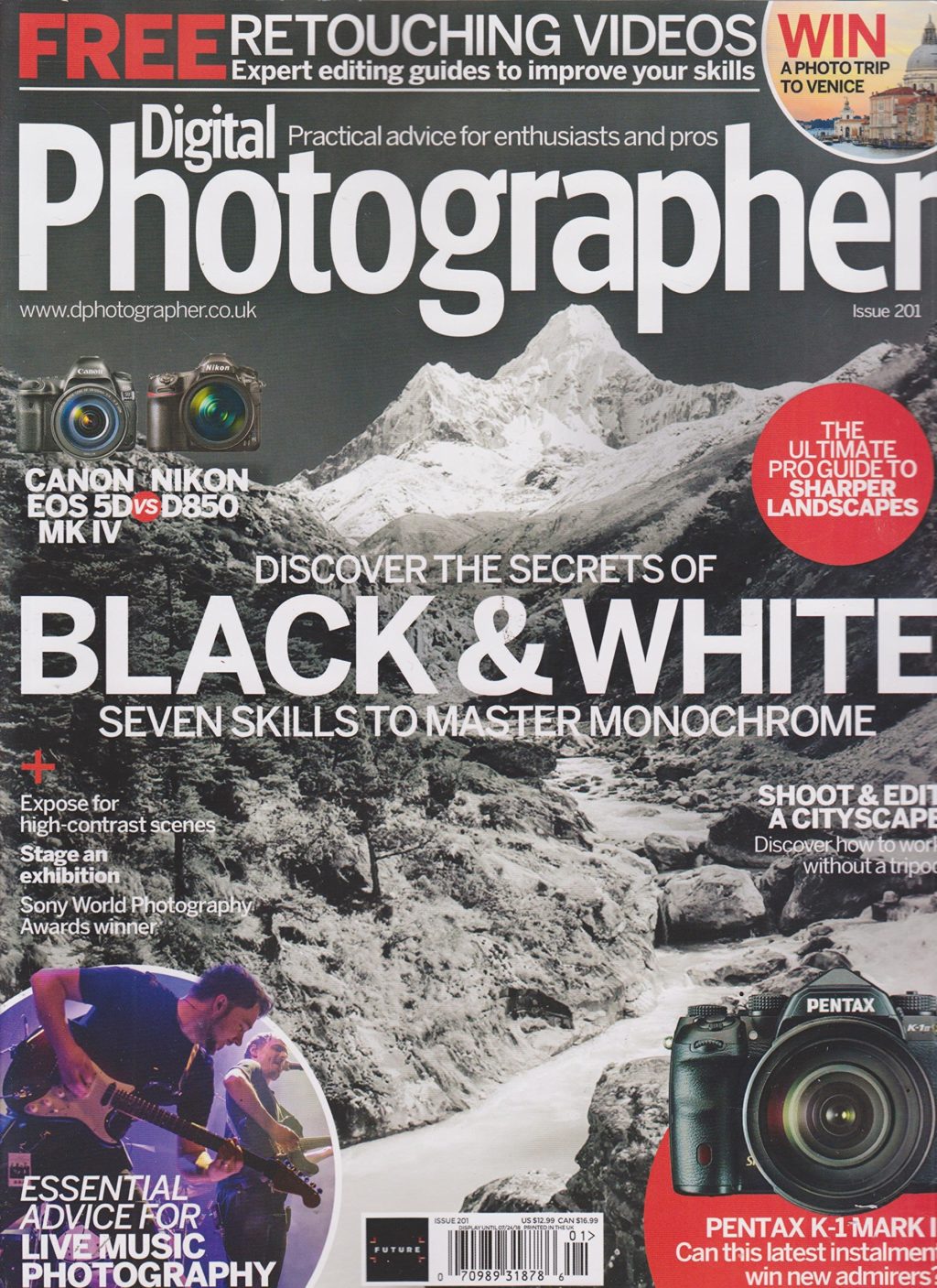
22 Comments
I was a long time Minolta user back in the 35mm film days. Had a number bodies, and upgraded to the Maxum line, but was always miffed that older lens were not forward compatible. Optics were great, and significant price point below Nikon and Canon, but great build and performance. I used to say that maybe, you could throw them up against the wall and the Nikon and Canon might survive a extra toss. Optically there was no difference seen in the Dark Room. I was at on of the 1st Digital SLR presentation by Canon, and saw the writing on the wall. Quickly sold my entire 35mm film stock and my Mamiya RB 67.
I did own an Minolta range finder camera at very early age and later own an Canon AE-1, but never realised today so much technology were innovated by this once very well established camera company at that era. Today I can recall its name, although it was Japanese camera, it used Minolta named in Chinese traditional character which means Min = ten thousands, nol = capabilities and ta = reached or achievement. Interesting indeed and very much appreciation for this old firm!
I like the article very much.I still own Miinolta 9000 maxxum & like the results.
Shot Minolta film cameras from 1984 up till 2007, when I went Digital ( still have the X-700 I bought in 1988).
Recently got back into Minolta film cameras—first got a Minolta XK ( the also-ran of professional film cameras—if only they had adapted it for a motor drive…) and then a XD-s. Good thing I’d kept all my MD lenses..
I consider the Sony caneras as Minolta’s revenge from the grave…
I LOVE MINOLTA AS THEY WERE THE ONE TO TRAIN ME IN CAMERA SERVICE IN OSAKA FACTORY IN YEAR 1985.
I STILL REMEMBER HOW MINOLTA WAS IN THOSE DAYS WHEN THEY INTRODUCED FIRST AUTO FOCUS SLR . THE WHOLE WORLD WAS PROUD OF THIS ACHIEVEMENT- THEY WERE RUNNING THREE SHIFTS TO MEET THE DEMANDS.
I AM HAPPY MANY OF THEIR CAMERA & LENS DYES USED BY SONY FOR THEIR CAMERA MODELS.
Have been very surprised at the great results Minolta s old vintage lenses still achieve when adapted to use on digital.Minolta cameras were often shared with Leica designs and they made lenses for them that says a lot. Sad this company has gone, even John Glenn took a converted Minolta hi magic to the moon, a lot of interesting history to this company.
Nice Minolta/Sony segue story. Brings back fond memories. My first nice camera was a Minolta SRT-201, a match-meter metal block that made you work a little for a good photograph but was worth it. When it got stolen (!), I got an XG-M, plasticky but an absolute joy to use. My father had an X-700 that seemed to do everything but tie your shoes. I eventually joined the Sony SLR crowd not long after their KM acquisition with an a300, still a good camera despite those confounded CF cards. An a65 came later but succumbed to internal fungus that really only reveals itself at small > f/8 apertures, but convinced me to get an a77 II with the impending death of the Alpha mount. I’m getting some Minolta A-mount lenses for it to join my Sonys, one an 80-200mm f/2.8 monster. It sounds like a cordless drill but what a piece of glass! Just a few days ago, I reentered the 35mm world with an XD 11, which I had dreamed of having for over 40 years. Literally, it was like stepping back in time. It will soon be paired with another item I’ve wanted forever, a 50mm f/1.2 lens. The camera needs a couple of issues addressed but hopefully it should be good to go. So now I can’t decide if I’m a Sonolta or a Minoltony fan.
The XD7 / XD11 didn’t bring in PASM – check the camera – the mode switch next to the shutter speed dial says only MAS (not even in correct order). The reason being the XD7 / XD11 didn’t have a program mode. It is credited by many as being the first camera with program capability because it had the ability to adjust both aperture and shutter speed but ONLY if you ran out of available EV in the mode you had set. It was my first camera with auto modes. Look at a few examples online and you will see.
The XD7/XD11 had PMAS. It just wasn’t labeled or advertised as such. Set the shutter speed to 1/125, and the lens opening to the smallest opening available, and hey presto… P!
Did you overlook:
– First SLR’s with Auto return mirror and auto aperture (Minolta SR-2 of 1958)
– First SLR with built-in TTL metering (SR T 101 of 1966)
– TTL flash that was licensed to Olympus but soon used on X-700/X-600/X-570/X-500
– First Flash system with Wireless TTL ( Maxxum/Dynax/Alpha 7xi and 3500xi flash of 1991) and still in use in today’s Sony cameras
– First HSS capable camera flash combo ( Maxxum/Dynax/Alpha 700si and 5400HS flash of 1993) also still in use in today’s Sony cameras
Makes me smile, my dad shot Minolta when he was young, without knowing the history I bought into the sony alpha lineup. I like to think of my Alpha as his camera’s spiritual successor.
The ‘Alpha’ branding and logo is Minolta.
The whole Minolta staff and R&D were bought by Sony.
The only thing is that the E camera mount was a product of Sony Cybershot consumer division. The Logical step was to merge the Minolta line and the Cybershot smaller lens which is suited to mirrorless.
I had Minolta Gear during the late 70’s and 80’s, and their Enlarger Lenses in my Darkroom.
You did not mention OTF metering, which they invented and first used by Olympus, what about
the XM and XM Motor from the mid 70’s, when i used my Bronica SQ outdoors i used my X700 and 85mm F2 as a light meter for the Bronny, because the combo was so accurate.. and their was heaps of other goodies produced by Minolta..
I used to have a Minolta SLR camera in late seventies to late eighties. and I can say that I was proud to have it. I used to wonder what happened to Minolta and tis article has enlightened me a lot.
Thanks!
A very good, brief summary of Minolta, but there is so much to Minolta’s history — that still lives on in Sony — that you can’t mention it all. Just a couple of other Minolta firsts were the first Japanese lenses with optical coatings, as well as the first multi-coated lenses. And the first 35mm Japanese camera with a built-in coupled meter. See:
https://www.subclub.org/minman/history.htm
But Minolta was never a second-tier photographic company, as suggested. They were always considered one of the top five, along with Canon, Pentax, Nikon, and Olympus. And many of their lenses were considered so innovative and outstanding that Leica used them on their SLR and rangefinder cameras.
Perhaps the legacy of Minolta will be in their optics. If you look at Sony’s lenses today, you are basically looking at a Minolta-engineered product — it’s too bad that Sony has decided not to market some of Minolta’s best & unique lenses, such as their macro and micro bellows wonders.
But don’t fret — you can still buy them for next to nothing.
Dear Sir: I came into Minolta Maxum as a collector. My Maxx 7000i is an incredible camera. Today my system is my 7000i, Sony A68 asps, and my Sony A99 mk ii bodies.
I crafted this system around 9 Maxum lenses. 3 systems. Each system 9 Maxum lenses deep. Minolta did not die. It evolved. Film photography did not die- it evolved as well. Without Minolta, the evolution to digital might never occurred.
Loved this article. I too started out with a Minolta SRT101 in 1968. Later got an X700, then a Magnificat MD11, then 2 Maxxum 9000s. I wisely kept them all!
Optically they were the equal of Nikon (Canon was not a direct competitor to Nikon until the Canon F-1). I later got my first digital DSLR: Konica-Minolta 7D. A great 6MP camera (I still have) that used my Maxxum lenses.
There were many pros who used Minolta film; Eugene Smith, Harry Benson, David Hamilton, Susanne Saesz, Lucien Clegue, Bob Guccione, Annie Liebowitz, Herbert Kepler, Richard Crowley, Sawatari and Uwe Ommer and others. Many fine photo books by each of these photographers (except by Crowley whose fame comes from making Mick Jagger’s tongue famous). All spoke highly of their Minolta SLRs.
Yes, Sony is the continued successor to Minolta. Some sweet justice many years later: while Nikon and Canon outlived Minolta film and digital, today Sony out paces and outsells Nikon and Canon.
I worked in marketing for Minolta in the UK. So many of the new camera launches featured one world’s first or another that I lost count.
Minolta wasn’t 2nd tier, we were in the Top 5 and regularly jostling for the top places.
I still own a rare Xd-s and crave a 250mm reflex lens, but all my photography is now done on my phone!
Great times!
I very much enjoyed your article on the demise of a great camera company. I confess to being an avid fan of Minolta’s, having owned range finders, TLRs, SLRs, AFs and DSLRs. I still possess several including SRT100x, XD7, X700, 7000(AF) and Dynax7 as well as Sony Alpha SLT A77. In their day, Minolta cameras aimed at the consumer and pro-consumer market were value for money wise equal to and usually better than the offerings of other makers.
The names of many great cameras, such as Rollei, Voigtlander, Fujica and Contax, etc., have fallen into obscurity only to be resurrected again. I for one would prefer not to see the Minolta name resurrected as a mere badge on some camera, much better it retains its deserved mythical status.
My first Minolta SLR was a 7000i, then the very futuristic looking 9xi, purchased 2nd hand for a fraction of its original cost. Minolta perhaps went down a bit of a rabbit hole with the xi series, continuing the use of the smart function cards used in the i series instead of building in extra functionality in the cameras themselves. I moved on to Sony A100, A900, and then A7 series mirrorless, but I still use my Minolta lenses collected over the years and applaud Minolta it’s ingenuity.
Let’s just say I cut my photographic teeth on Minoltas. My first one, an X370, was a Christmas present from my parents in 1984.
I admit I did not make any serious use of it until about 1987, when I took a photo workshop, using black-and-white film, and that was it… It was onward and upward, or onward and downward, depending on your point of view.
From there, it was onto the X 700, which I thought was the bees knees at the time. Two of those, along with various minolta lenses were my main shooting kit for years….
Then, along came digital, among other things, and my Minoltas languished in the closet for years….
However, in the last five years or so, my interest in Minoltas has been rekindled, and I know own a clutch it them, plus a range of lenses from 28 mm to 200 mm (always glad I never sold off the lenses I had, particularly the 28 mm F2 lens I actually bought new in 2002 – one of my favorites)
I admit that I shoot mostly digital now, but a regular basis, I take out the Minoltas, and blast away with film… The company may be gone, but I’m still shooting with ‘em…
Thanks, I liked this. I too was a professional Minolta user. I started with an Sr-T101, so I had a fondness for them. Until I went into the rain forest of West Africa with a couple Nikon F3’s, which froze up with moisture. Not long after I was to spend a year (!) in an Asian rainforest. Figuring any camera I took would be ruined by fungus, and wanting to shoot primes, I went with a couple of X-700’s. I knew they were durable and Minolta primes were unbeatable, and inexpensive used.
OK, a year being beat around, wet, dropped. The X-700’s didn’t miss a beat, and the images from the Minolta lenses were of course excellent. At the end, if I looked closely, I could see a little fungus just beginning to creep into the X-700’s viewfinders, but it was inconsequential. None of the primes got fungus! Although my zooms did.